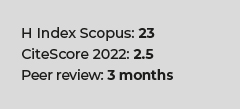Results of the implementation of three national guidelines for the prevention of HIV vertical transmission in Instituto Nacional Materno Perinatal. Lima, Peru
DOI:
https://doi.org/10.17843/rpmesp.2011.283.528Keywords:
Infectious disease transmission, vertical, HIV, HIV infections, Practice guideline, ZidovudineAbstract
A retrospective analysis is performed in three successive periods between the years 1996 and 2009, in order to evaluate the impact of the implementation of three national guidelines for the prevention of the vertical transmission of HIV. 275 births were included in 13 years. Significant statistical differences were found in the percentage of HIV cases in the children exposed to the virus between the three periods: 15% during the period in which only zidovudine (AZT) was administered to the pregnant woman, 6.4% during the second period (administration of AZT to the pregnant woman not fulfilling HAART initiation criteria and HAART to those fulfilling criteria for this treatment), and 4% during the third period in which HAART was applied to all pregnant women with HIV infection. 95% of pregnant women ended their pregnancy by cesarean section and the 100% of children received infant formula. Changes made in national guidelines have produced a positive impact in the decrease of HIV infected children in the Instituto Nacional Materno Perinatal in Peru.Downloads
Download data is not yet available.
Downloads
Published
2011-09-30
Issue
Section
Research Articles
How to Cite
1.
Velásquez C. Results of the implementation of three national guidelines for the prevention of HIV vertical transmission in Instituto Nacional Materno Perinatal. Lima, Peru. Rev Peru Med Exp Salud Publica [Internet]. 2011 Sep. 30 [cited 2024 Apr. 19];28(3). Available from: https://rpmesp.ins.gob.pe/index.php/rpmesp/article/view/528



























